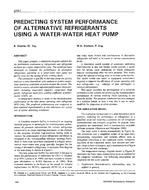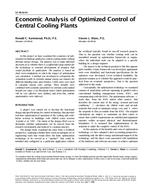Most predictable climatic impacts on buildings can be successfully managed by an adequate construction. However, possible deviations in predicted climatic loads and especially the long-term ones may change the building expected response. For example, changes in snow and wind loads and short-time precipitation are of great interest for constructions with large, flat roofs. Climate projections from climate models point to a warmer climate with an intensified hydrological cycle in the future. Warmer summers lead to increased demand for cooling energy, while a warmer, more humid climate will possibly increase risks for moisture and mold-growth problems. This paper gives some outlines from a new research project on the sustainability of Swedish built environment towards climate changes. The project will be conducted at Chalmers University of Technology, Sweden, in cooperation with the climate research unit Rossby Centre at the Swedish Meteorological and Hydrological Institute.
Presented at Thermal Performance of Exterior Envelopes of Whole Buildings X – December 2007
Units: SI
Citation: Thermal Performance of Exterior Envelopes of Whole Buildings X
Product Details
- Published:
- 2008
- Number of Pages:
- 10
- File Size:
- 1 file , 2.4 MB
- Product Code(s):
- D-BldgsX157


